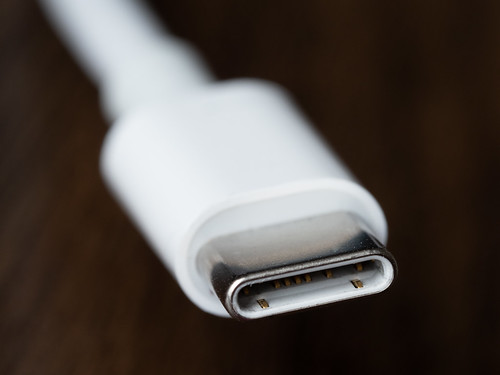How to Navigate Apple’s Shift From Lightning to USB-C
USB-C #USB-C

The iPhone 15 (technically, the 17th iteration of the iconic Apple phone) has arrived with a big change that is sure to annoy many of us. Eventually, however, we’ll breathe a sigh of relief.
Allow me to unpack that. To comply with recent European regulations, the iPhone 15, unveiled Tuesday, will abandon the Lightning connector that has been the method for charging iPhones for 11 years. In its place will be a different oval-shaped connector: USB-C.
For the average tech user, change isn’t fun. This all means that when Apple customers buy their next iPhones, they will no longer be able to plug in all the Lightning accessories they have collected, such as charging cables, speaker docks and earbuds. They will have to replace those with new products that use USB-C connectors to plug into the new iPhones.
This transition feels like a bit of déjà vu. In 2012, Apple killed the relatively bulky 30-pin connector on iPhones to switch to Lightning, a slimmer and faster charging technology, which rendered many speakers and chargers obsolete.
What’s different this time is that most of us already have a USB-C cable. Modern headphones, game consoles and many laptops, including Apple’s MacBooks, long ago adopted USB-C as a standard charging port. The iPhone was one of the holdouts.
Why is this happening now? Last year, the European Union announced a mandate requiring all smartphone makers to adopt USB-C as a common charging connector by 2024. In theory, this will allow consumers to buy fewer power cables, which, regulators say, could cut down on environmental waste. Thierry Breton, a European commissioner involved in the legislation, said on LinkedIn this month: “A common charger is common sense.”
So we are heading toward an era of standardization in which one type of charger works with most of our electronics, which would be ideal. Many of us are familiar with the scenario in which someone is carrying an iPhone cable but a family member or friend needs a different one (likely a USB-C) to replenish their non-Apple phone or computer. Those days, in theory, will be no more.
But as is always the case with any big technology shift, it’s not as simple as it sounds. New dangers lie ahead — including the ability to destroy your phone with the wrong USB-C wire, phone repair experts say. If you’re going to carry only one cable, it’s more important than ever to be judicious about what you buy.
“Charger damage is a real thing,” said Jessa Jones, the owner of iPad Rehab, a mobile phone and tablet repair shop. “It’s very common, and it’s something you need to watch out for.”
Here’s what to know:
Not all USB-C cables are created equal.
The first step is to stop thinking about modern charging cables as dumb wires.
High-quality chargers are essentially electronics with tiny circuit boards inside them. On Apple’s official Lightning cable, there are two chips: One authenticates that the cable is made by Apple, while the other acts as a fuse that isolates damage to the charger. In the event of a power fluctuation, for example, only the charger would be destroyed and not the phone itself, Ms. Jones said.
The problem with USB-C cables is that while they usually look the same, the cheaper, low-quality cords offer no such protection for your device. They may have the correct oval connector, but inside, they lack chips to protect your phone.
So if you need a USB-C cable, don’t grab any cheap wire, like the $5 ones you’ll see at a gas station kiosk. Invest in a durable cable from a reputable company. Brands like Anker, Belkin and Amazon Basics are well known for their high-quality power cables that cost roughly $9 to $30, according to John Bumstead, the owner of RDKL Inc., a repair shop that refurbishes MacBooks. Buy the cables from trusted retailers or directly from the brands themselves — and avoid purchasing used wires on sites like eBay.
Be careful what you plug into.
Many USB-C cables lack chips to restrict the current powering your phone. So if you plug it into a source that charges at a higher voltage than your phone accepts, you could electrocute your phone, Ms. Jones said.
The lesson here is to be careful about what you plug your cord into. Those USB ports embedded into airplane back seats, hotel room walls or car consoles are a big no-no because it’s unclear what their charging rates are. It’s safest to only plug your USB-C cable into a high-quality charging brick that protects your phone. Wirecutter, our sister publication, recommends USB-C power bricks from Anker, RAVPower and Spigen that do a good job replenishing your phone quickly without damaging it.
There’s always wireless.
For iPhone owners who aren’t planning on upgrading right away but need new chargers, the most cost-effective alternative to buying another Lightning cable is to go wireless. The E.U. mandate applies only to wires that plug directly into devices — not wireless charging devices that replenish your phone via magnetic induction, such as Apple’s puck-shaped MagSafe, which magnetizes to the back of your phone, or wireless charging pads and stands from brands like Mophie, Anker and Belkin. So those are fine purchases for the foreseeable future.
Bottom Line
As long as you own a robust cable and a nice charging brick, you will probably be happy with this transition. The USB-C charging standard is faster at transferring data than Lightning, and there may even be some cool perks, like the ability to plug your phone directly into an external display to look at photos.
More important, when you’re traveling or commuting, you will no longer have to carry a jungle of wires in your bag, and if you leave your cable at home, chances are you’ll be near someone who is carrying the same one.